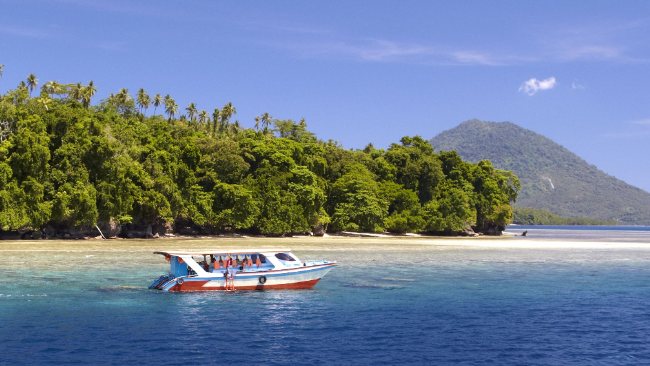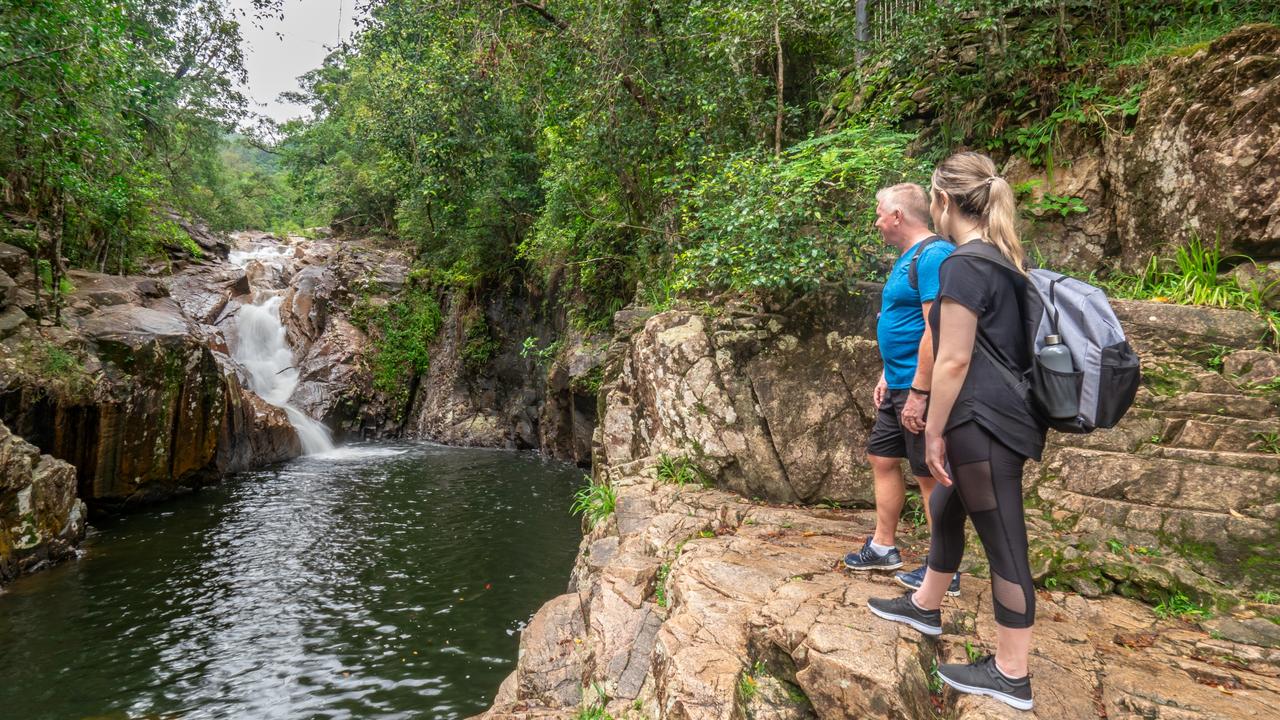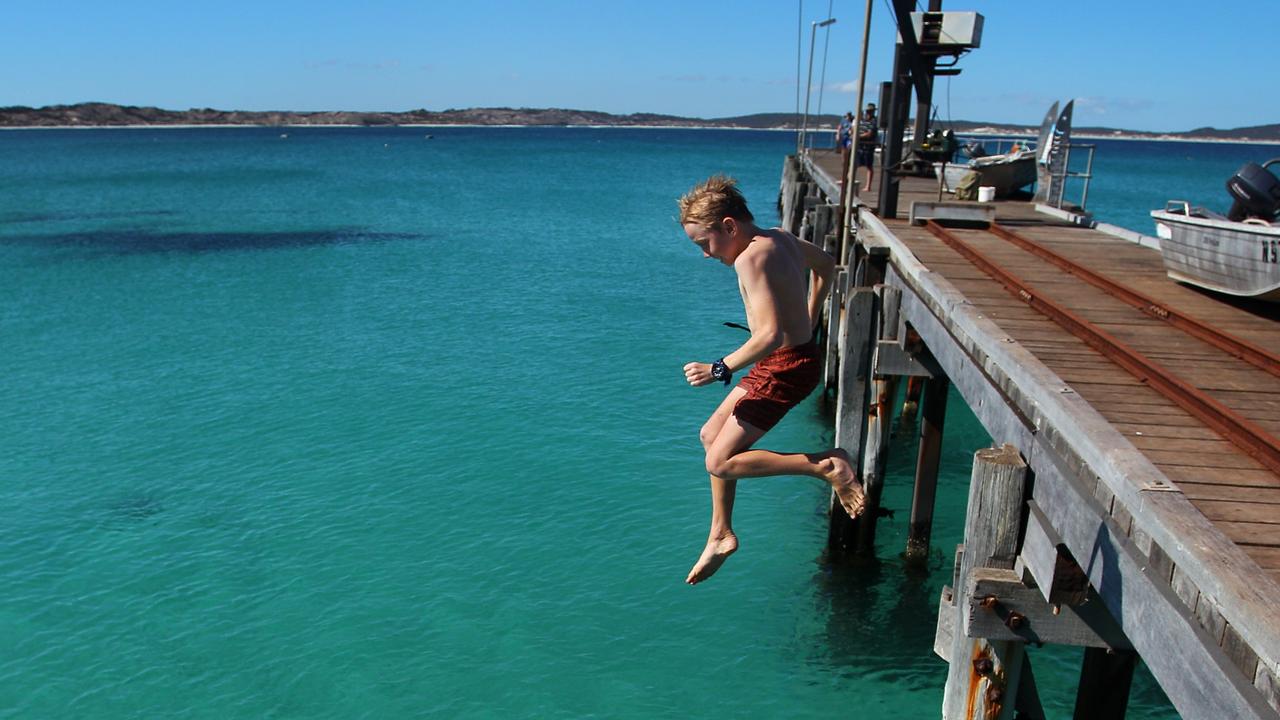Creatures from the blue lagoon
FROM the wildlife in the coconut palms to the critters at the bottom of the sea - Lembeh is full of laid-back eccentricity.

THE sheltered waters of Lembeh Strait in the Indonesian island territory of Sulawesi are a haven for fishing fleets and a hideaway for divers in search of quiet waters.
On the eastern tip of North Sulawesi, north of Timor and south of the Philippines, the Lembeh Strait is a narrow section of the Molucca Sea that separates the island of Bitung Selatan from the mainland.
Most divers who visit North Sulawesi head for Manado, focusing on the wall-dives around Bunaken National Park and the remarkable biodiversity of the Celebes Sea.
Yet two hours from Manado the Lembeh Strait offers a different style of underwater exploration, with fewer divers in the water, plenty of fish and the bonus of muck-diving through the volcanic black sands. Throw in a really good resort and you have a fine destination for pleasure above and below the water.
Lembeh Hills Resort is hidden away at the northern end of the strait, with 23 villas clinging to the steep hillside where the road ends and the jungle begins. The resort is modest in scale and big on charm. Apart from the pool, the spa and locally inspired dining, the focus is on getting among the reefs.
Views from the villas vary, however. The coconut palms are so thick that even the cliff villas have a partially obstructed view across the strait. I can see enough of the cove and neighbouring fishing village to gain a sense of where I am without losing my sense of privacy and, if I wanted to build my own fishing boat, there would be room inside my villa.
The interiors are modern and restrained, and the service follows a similar pattern. Don't come here looking for silver spoons and colonial formality. These are very relaxed people who are doing their best to meet international expectations, but with a generous dose of Sulawesi style.
The resort's dive centre has a few small boats and a team of very cheerful guides. The boys know their reefs intimately and get genuinely excited about sharing their experience.
With more than 40 reef sites to visit within a few minutes of the resort jetty, we are spoilt for choice.
The waters of Lembeh Strait can be a little turgid but the small fish and marine life are easily viewed in the shallows. Some old refuse covered in silt gets stirred up from the bottom every now and then but my attention is mostly taken by the fish, coral and freaky residents of the reef.
Our vessel is a small converted fishing boat, more functional than fancy, but our gear is top-notch down to the diving boots, adjustable flippers and glass goggles.
Morning trips are always the best in this part of the world, typically with flat water when you get out early and dark skies if you head out late. April to October are the prime months for good weather, with wet and wild conditions slowing the tourism trade outside that period.
The resort opened last November, and the architecture is more charming than chic. The grounds would quickly turn into jungle if the gardener went on leave, and there is just enough room on the paths for a golf buggy to carry guests up the hill. The spa centre is modest but well-trained staff deliver a seriously therapeutic touch.
A small fishing village neighbours the resort, where colourful outrigger boats contrast with the deep black volcanic sands.
Outriggers are great for shallow conditions, allowing the fishermen to skip across the surface and steer clear of the coral below.
Houses here are flat and low and surrounded by papaya trees and bougainvillea flowers.
These are not wealthy communities but the sea and forest do provide a bounty beyond currency.
I walk through town early in the morning and discover nearly everyone speaks enough English to say "good morning", and very little else.
Some of the fishermen here have retrained to become dive guides, putting their knowledge of the water and marine life to good use.
One man invites me into his home to show me his giant gecko, which is the size of a blue-tongue lizard.
It's a strangely beautiful creature with bold green eyes and mottled skin.
He says it lives in the coconut palms, and you have to be careful not to lose a finger when collecting. I take a step back from the chicken-wire.
Another lady has a parrot called Moonie on her front porch. The bird does a little dance every time you call its name.
Later I meet a baby squirrel that eats a chunk of my papaya. It is another resident of the coconut palms. The locals insist this furry bundle of eyes and ears is a baby tarsius, but our wildlife expert at the resort believes otherwise. The tarsius are the world's smallest primates, famous in Sulawesi, where seven species are now known to exist in the nearby forests.
Tourists can visit them in the wild but you need a little patience. These nocturnal primates are very small and rather shy, but some nesting trees contain families of tarsius that are relaxed about human intrusions.
To see them descend from their nests, we spend an hour driving down a forest trail, walk for 30 minutes and wait for darkness. It makes for a late evening back at the resort, but the chef is happy to serve up a hot meal. Few people come to Lembeh for the tarsius. Not with such rich diving options all along the straits. Only a small proportion of visitors are Australian.
The tourism infrastructure is still developing. Dedicated dive resorts on the Manado Bay side of Sulawesi are comfortable but far from indulgent, and guests rarely get a cultural connection with the locals.
No trip to Manado would be complete without a day in the waters of Bunaken National Park, where sharks and turtles are abundant, but the sheltered coves of Lembeh Strait are in many ways more spectacular.



